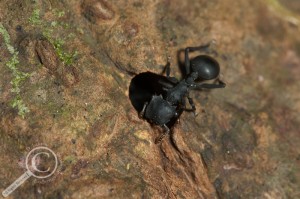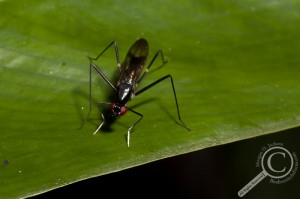Today I figured I’d introduce my study organisms, the Stilt-legged flies (Micropezidae) in the genus Taeniaptera (latin for ribbon wing I believe, referencing the bands on the wing).
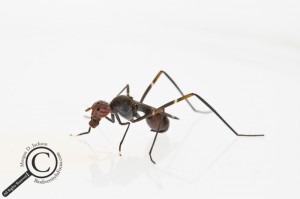
(Click on the photos to view them larger)
I was first introduced to these flies in Amazonian Bolivia on a University of Guelph Field Entomology course (which was easily the best course of my undergrad). They are commonly encountered standing on broad leaves waiting for food to literally drop from the heavens (the females feed on bird droppings & monkey dung, and the males tag along to find a mate). What makes these flies even cooler (I know, its hard to get cooler than feasting on fresh dung…) is their remarkable morphological and behavioural mimicry of parasitic wasps.
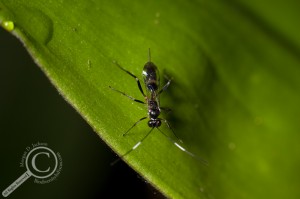
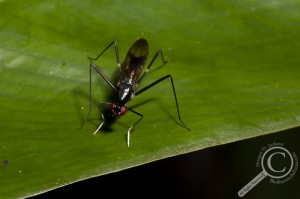
I came across these two specimens (a braconid wasp above and a Poecilotylus sp. fly below) while in Ecuador this past spring. Fairly similar at first glance, especially in the shadows of the jungle! The flies add to the deception with their fore legs, which they wave out in front of their bodies mimicking the constantly moving antennae of the wasps (notice the white bands on the wasp’s antennae and the white tips of the fly’s front legs).
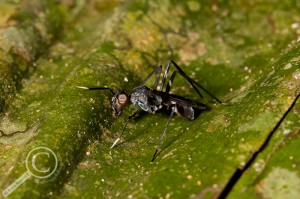
So what am I doing with these attractive little buggers? Well, right now generic concepts (the characters that define a genus) of several genera including Taeniaptera are overlapping and ill-defined, resulting in confusion over the relationships between certain species groups. I am using morphological and molecular characters (DNA sequences) to find monophyletic groupings (groups descended from a single common ancestor as opposed to paraphyletic groupings where species from different ancestors are considered to be most closely related) of these species, which I can then confidently define as strongly supported genera. Think of it as untying knots in the branches of the tree of life!
I’ll provide updates on my work every once in awhile, but no worries, my posts won’t generally be as detail-oriented and will have more photos!

